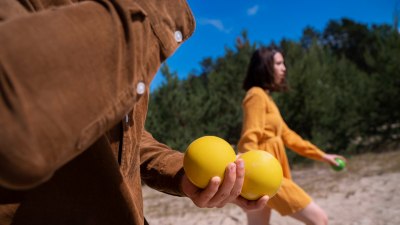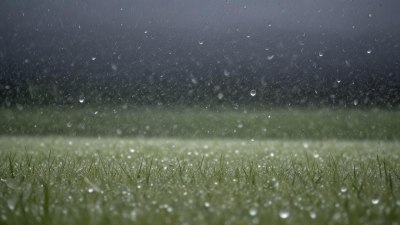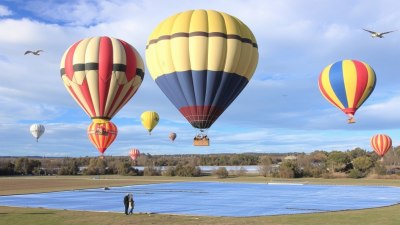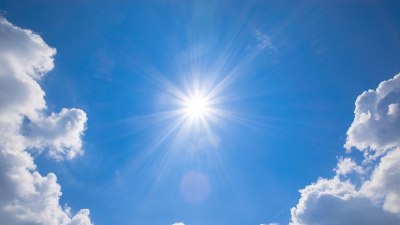The Hidden Meteorology Behind Your Perfect Spikeball Serve
Explore the intriguing connection between meteorology and perfecting your Spikeball serve.

As you step onto the Spikeball court, you might be focused on the mechanics of your serve, the angle of your arm, or the coordination with your teammates. However, there lies an unseen factor that can significantly influence your gameplay – meteorology. Understanding the hidden meteorological elements that affect how you deliver that perfect serve can enhance not just your performance but also your enjoyment of the game.
Understanding Weather Patterns
Before we delve deep into specific effects of meteorological conditions on your Spikeball serve, it's essential to understand the factors that constitute weather patterns. These elements include temperature, humidity, wind speed, and atmospheric pressure. Each of these plays a critical role in not only how the ball travels but also how the players perform on the court.
Temperature and Performance
Temperature can have a profound effect on your physical capabilities and the behavior of the ball. Warmer temperatures typically lead to better muscle flexibility and cardiovascular efficiency, allowing for more explosive movements – vital for a powerful Spikeball serve. Additionally, the rubber material of the Spikeball might react differently based on temperature; during hotter days, it could be slightly more elastic, potentially resulting in a bouncier and more unpredictable ball.
The Impact of Humidity
Humidity, or the amount of moisture in the air, also impacts your game in more ways than one. High humidity levels can cause the players to become fatigued more quickly due to excess moisture on the skin, which often leads to increased sweating. This can hinder your performance as the conditions can contribute to slippery hands, thus affecting your grip on the ball. On the flip side, lower humidity can keep you cool but may dry out the ball, making it less receptive to your touch, which could impact your serve consistency.
Wind: A Hidden Player
One of the more dynamic aspects of meteorology affecting your Spikeball game is wind. The direction and speed of the wind can dramatically influence the trajectory of the ball. A strong headwind can make a highly-fortified serve seem feeble, while a tailwind might give you an extra boost. Understanding how to read the wind and adjusting your angle can transform your service into a more weaponized technique. This is where practice comes into play; testing different angles in various wind conditions can arm you with the experience needed to adapt during actual gameplay.
Atmospheric Pressure and Altitude Effects
Another intriguing factor is atmospheric pressure and its relation to altitude. At higher elevations, the air is thinner; thus, balls can travel further due to decreased air resistance. Conversely, at sea level, Spikeballs may not travel as far but might maintain a more consistent speed. Knowing where you are playing can help determine how much power to put into your serves. Coupling this knowledge with practice will ensure your confidence on the court, regardless of your altitude.
Creating the Perfect Environment
While you may not always have control over the weather conditions, you can certainly strategize around them. If you know that a windy day is approaching, adjust your serving technique prior to stepping onto the court. On more humid days, prioritize staying hydrated and practicing grip techniques that can offset excessive sweat, thus preserving your control over the ball.
Weather Preparation Tips for Spikeball
To optimize your serving performance based on various weather conditions, here are some practical tips:
- Check the weather forecast regularly before games.
- Bring an extra towel to wipe off sweat during high humidity.
- Practice serves in different wind conditions to understand how wind affects ball trajectory.
- Stay hydrated and maintain proper nutrition to endure various temperature conditions.
- Wear appropriate gear to keep your body at an optimal temperature.
The Psychological Side of Weather
Beyond the physical effects, the weather can also impact your mindset while playing Spikeball. Certain weather conditions can alter your motivation and mental performance. For instance, playing in hot, sunny weather may boost your spirited engagement, while playing in gray, overcast conditions might dampen your enthusiasm. Understanding this psychological aspect can be crucial in maintaining focus and confidence throughout the match.
Bringing it All Together
In conclusion, the hidden meteorology behind your perfect Spikeball serve is a mixture of physical, environmental, and psychological factors. By equipping yourself with knowledge about how these elements interact, you can elevate your game performance. Weather is often taken for granted, yet it is an undeniable force that shapes every element of outdoor sport. So, the next time you prepare for a Spikeball match, remember the subtle influence of meteorology on your perfect serve, and make adjustments accordingly. Adapting to these invisible forces could be what sets you apart as a skilled Spikeball player.











